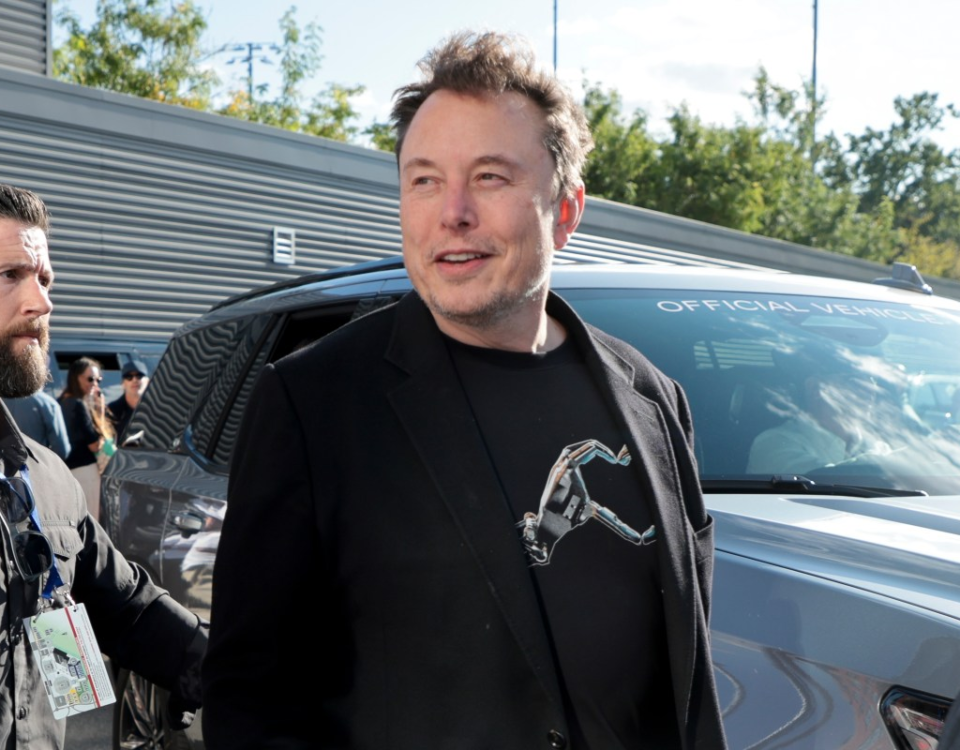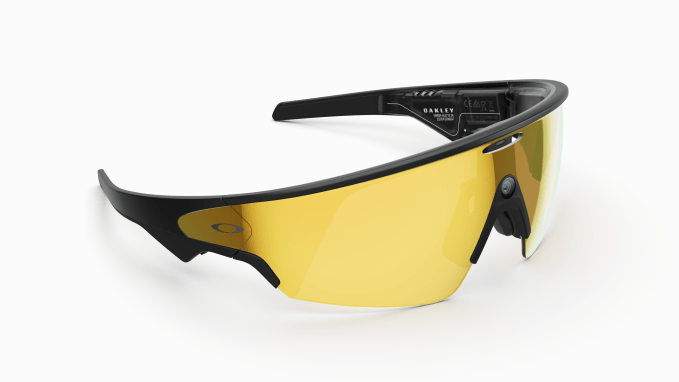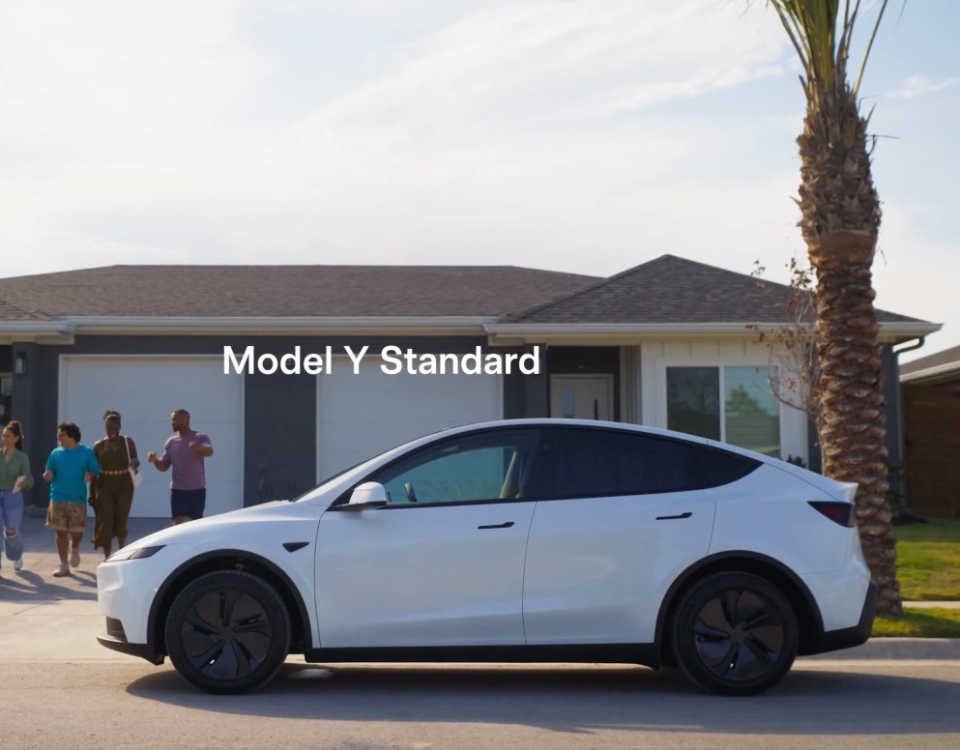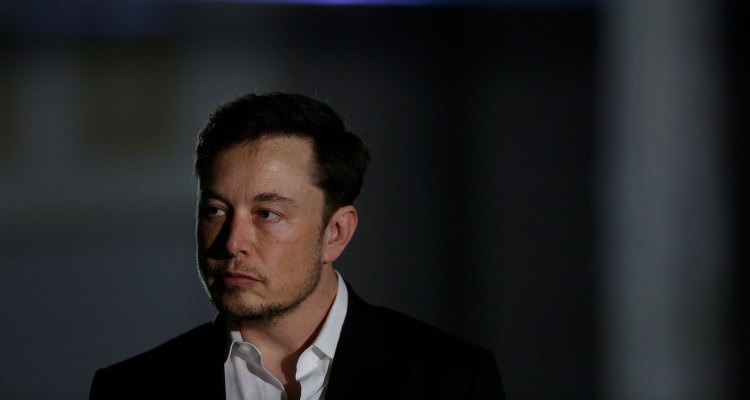
Tesla shareholders urge judge to find Musk coerced board to buy SolarCity
January 21, 2022
NASA celebrates private sector deployments of space-born tech in its latest Spinoff
January 25, 2022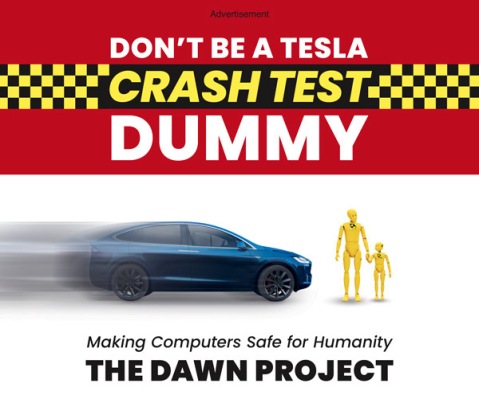
A full page advertisement in Sunday’s New York Times took aim at Tesla’s “Full Self-Driving” software, calling it “the worst software ever sold by a Fortune 500 company” and offering $10,000, the same price as the software itself to the first person who could name “another commercial product from a Fortune 500 company that has a critical malfunction every 8 minutes.”
The ad was taken out by The Dawn Project, a recently founded organization aiming to ban unsafe software from safety critical systems that can be targeted by military-style hackers, as part of a campaign to remove Tesla Full Self-Driving (FSD) from public roads until it has “1,000 times fewer critical malfunctions.”
The founder of the advocacy group, Dan O’Dowd, is also the CEO of Green Hill Software, a company that builds operating systems and programming tools for embedded safety and security systems. At CES, the company said BMW’s iX vehicle is using its real-time OS and other safety software, and it also announced the availability of its new over-the-air software product and data services for automotive electronic systems.
Despite the potential competitive bias of The Dawn Project’s founder, Tesla’s FSD beta software, an advanced driver assistance system that Tesla owners can access to handle some driving function on city streets, has come under scrutiny in recent months after a series of YouTube videos that showed flaws in the system went viral.
The NYT ad comes just days after the California Department of Motor Vehicles told Tesla it would be “revisiting” its opinion that the company’s test program, which uses consumers and not professional safety operators, doesn’t fall under the department’s autonomous vehicle regulations. The California DMV regulates autonomous driving testing in the state and requires other companies like Waymo and Cruise that are developing, testing and planning to deploy robotaxis to report crashes and system failures called “disengagements. Tesla has never issued those reports.
Tesla CEO Elon Musk has since vaguely responded on Twitter, claiming Tesla’s FSD has not resulted in accident or injury since its launch. The U.S. National Highway Traffic Safety Administration (NHTSA) is investigating a report from the owner of a Tesla Model Y, who reported his vehicle went into the wrong lane while making a left turn in FSD mode, resulting in the vehicle being struck by another driver.
Even if that was the first FSD crash, Tesla’s Autopilot, the automaker’s ADAS that comes standard on vehicles, has been involved in around a dozen crashes.
Alongside the NYT ad, The Dawn Project published a fact check of its claims, referring to its own FSD safety analysis that studied data from 21 YouTube videos totaling seven hours of drive time.
The videos analyzed included beta versions 8 (released December 2020) and 10 (released September 2021), and the study avoided videos with significantly positive or negative titles to reduce bias. Each video was graded according to the California DMV’s Driver Performance Evaluation, which is what human drivers must pass in order to gain a driver’s license. To pass a driver’s test, drivers in California must have 15 or fewer scoring maneuver errors, like failing to use turn signals when changing lanes or maintaining a safe distance from other moving vehicles, and zero critical driving errors, like crashing or running a red light.
The study found that FSD v10 committed 16 scoring maneuver errors on average in under an hour and a critical driving error about every 8 minutes. There as an improvement in errors over the nine months between v8 and v10, the analysis found, but at the current rate of improvement, “it will take another 7.8 years (per AAA data) to 8.8 years (per Bureau of Transportation data) to achieve the accident rate of a human driver.”
The Dawn Project’s ad makes some bold claims that should be taken with a grain of salt, particularly because the sample size is far too small to be taken seriously from a statistical standpoint. If, however, the seven hours of footage is indeed representative of an average FSD drive, the findings could be indicative of a larger problem with Tesla’s FSD software and speak to the broader question of whether Tesla should be allowed to test this software on public roads with no regulation.
“We did not sign up for our families to be crash test dummies for thousands of Tesla cars being driven on the public roads…” the ad reads.
Federal regulators have started to take some action against Tesla and its Autopilot and FSD beta software systems.
In October, NHTSA sent two letters to the automaker targeting the its use of non-disclosure agreements for owners who gain early access to FSD beta, as well as the company’s decision to use over-the-air software updates to fix an issue in the standard Autopilot system that should have been a recall. In addition, Consumer Reports issued a statement over the summer saying the FSD version 9 software upgrade didn’t appear to be safe enough for public roads and that it would independently test the software. Last week, the organization published its test results, which revealed that “Tesla’s camera-based driver monitoring system fails to keep a driver’s attention on the road.” CR found that Ford’s BlueCruise, on the other hand, issues alerts when the driver’s eyes are diverted.
Since then, Tesla has rolled out many different versions of its v10 software – 10.9 should be here any day now, and version 11 with “single city/highway software stack” and “many other architectural upgrades” coming out in February, according to CEO Elon Musk.
Reviews of the latest version 10.8 are skewed, with some online commenters saying it’s much smoother, and many others stating that they don’t feel confident in using the tech at all. A thread reviewing the newest FSD version on the Tesla Motors subreddit page shows owners sharing complaints about the software, with one even writing, “Definitely not ready for the general public yet…”
Another commenter said it took too long for the car to turn right onto “an entirely empty, straight road…Then it had to turn left and kept hesitating for no reason, blocking the oncoming lane, to then suddenly accelerate once it had made it onto the next street, followed by a just-as-sudden deceleration because it changed its mind about the speed and now thought a 45 mph road was 25 mph.”
The driver said it eventually had to disengage entirely because the system completely ignored an upcoming left turn, one that was to occur at a standard intersection “with lights and clear visibility in all directions and no other traffic.”
The Dawn Project’s campaign highlights a warning from Tesla that its FSD “may do the wrong thing at the worst time.”
“How can anyone tolerate a safety-critical product on the market which may do the wrong thing at the worst time,” said the advocacy group. “Isn’t that the definition of defective? Full Self-Driving must be removed from our roads immediately.”
Neither Tesla nor The Dawn Project could be reached for comment.

